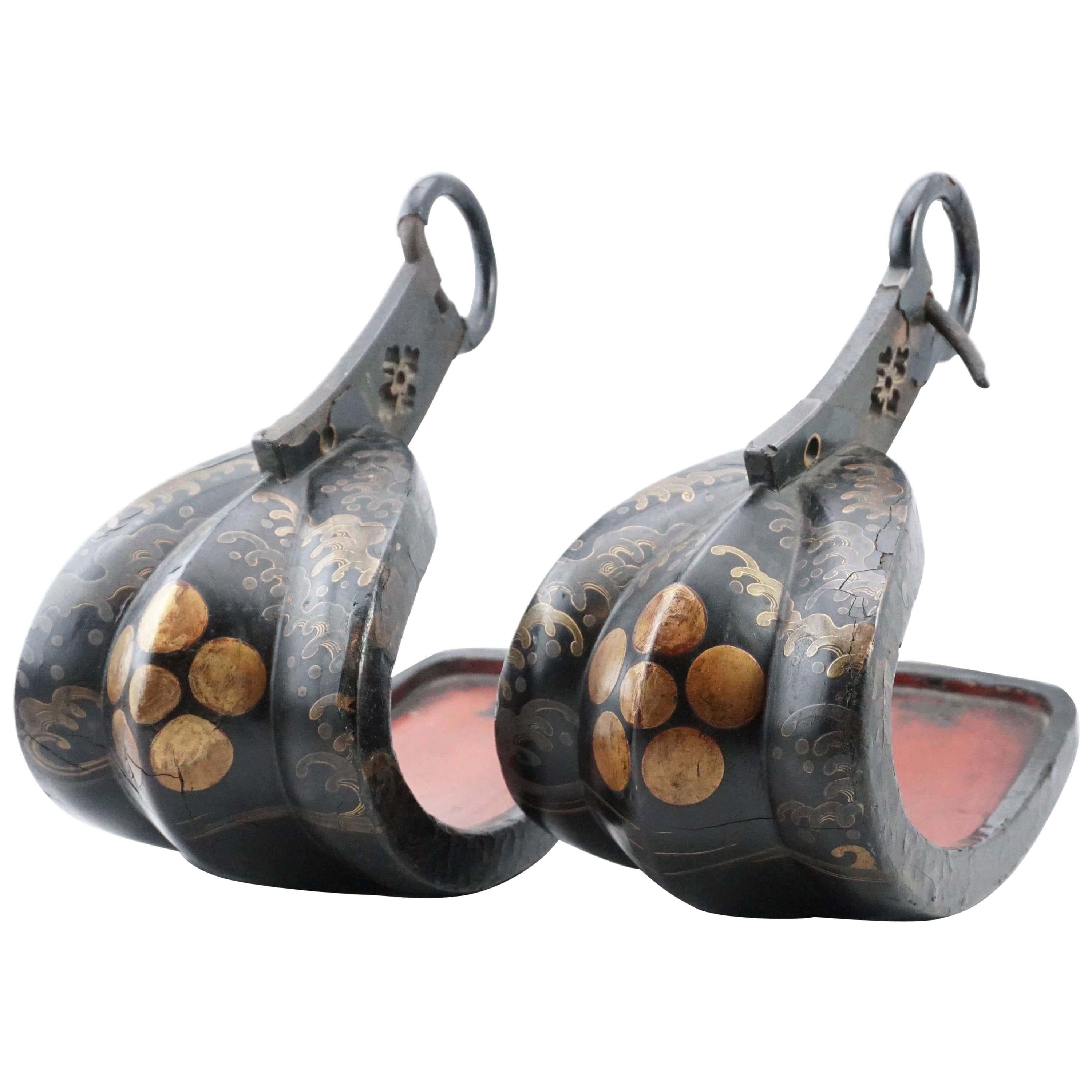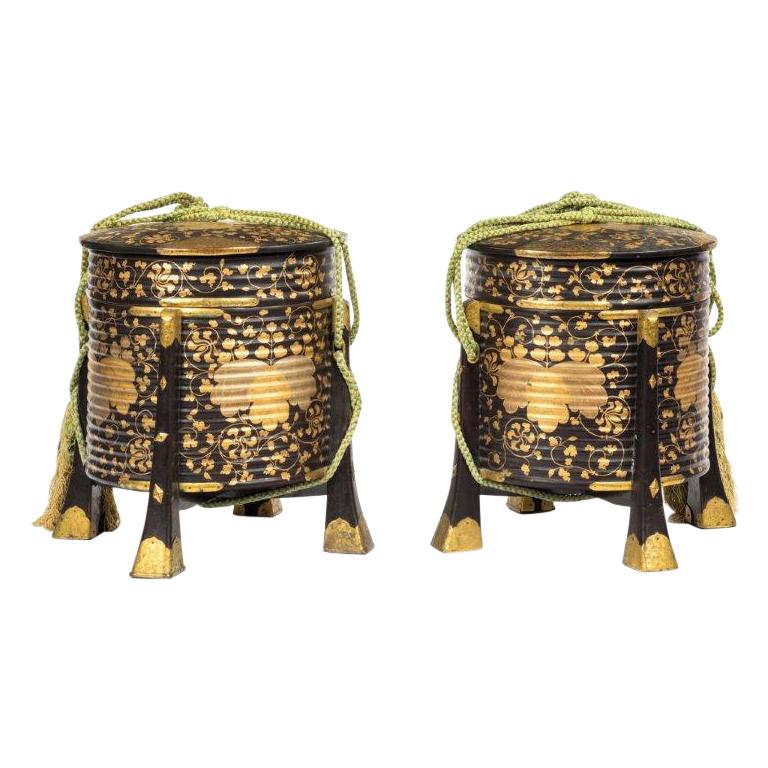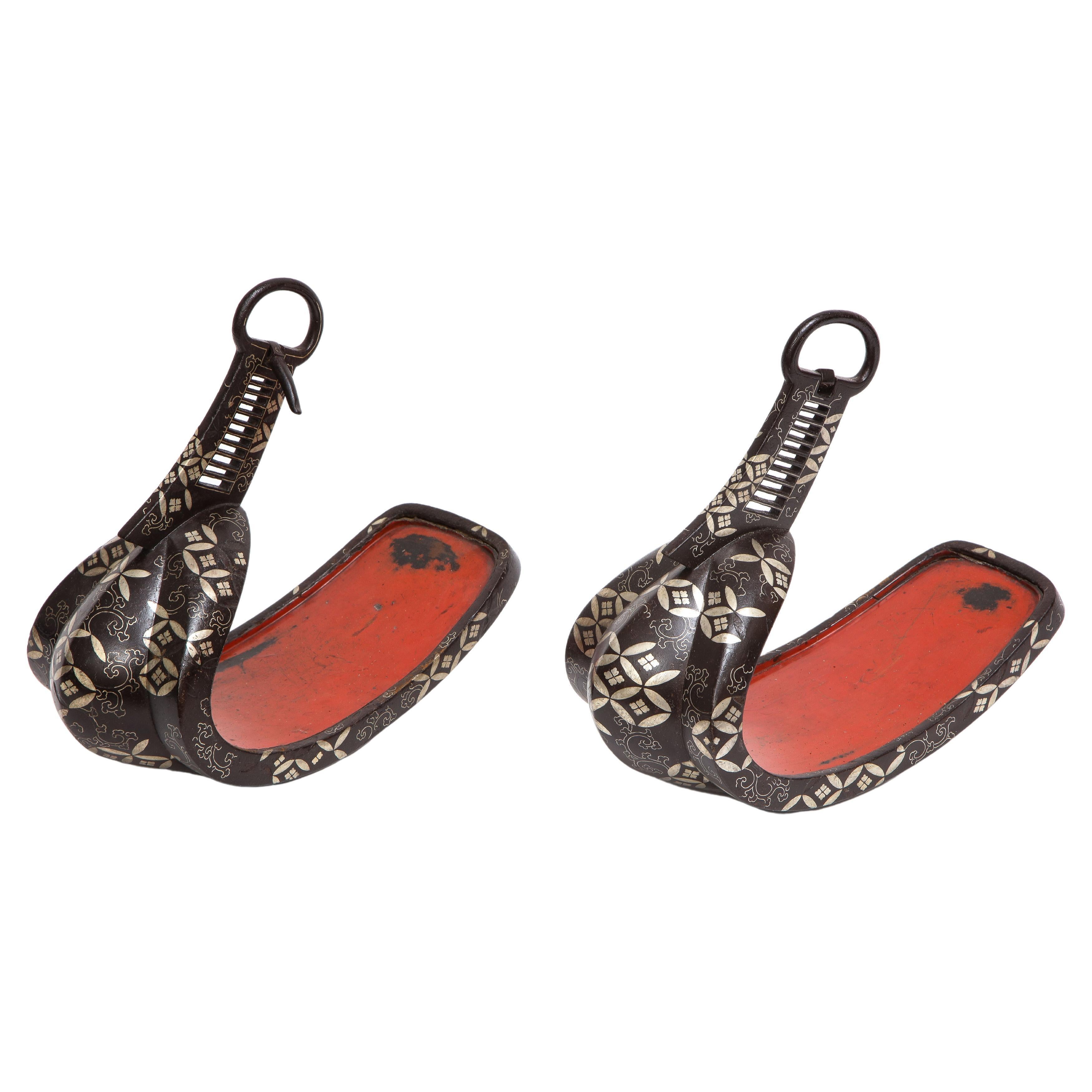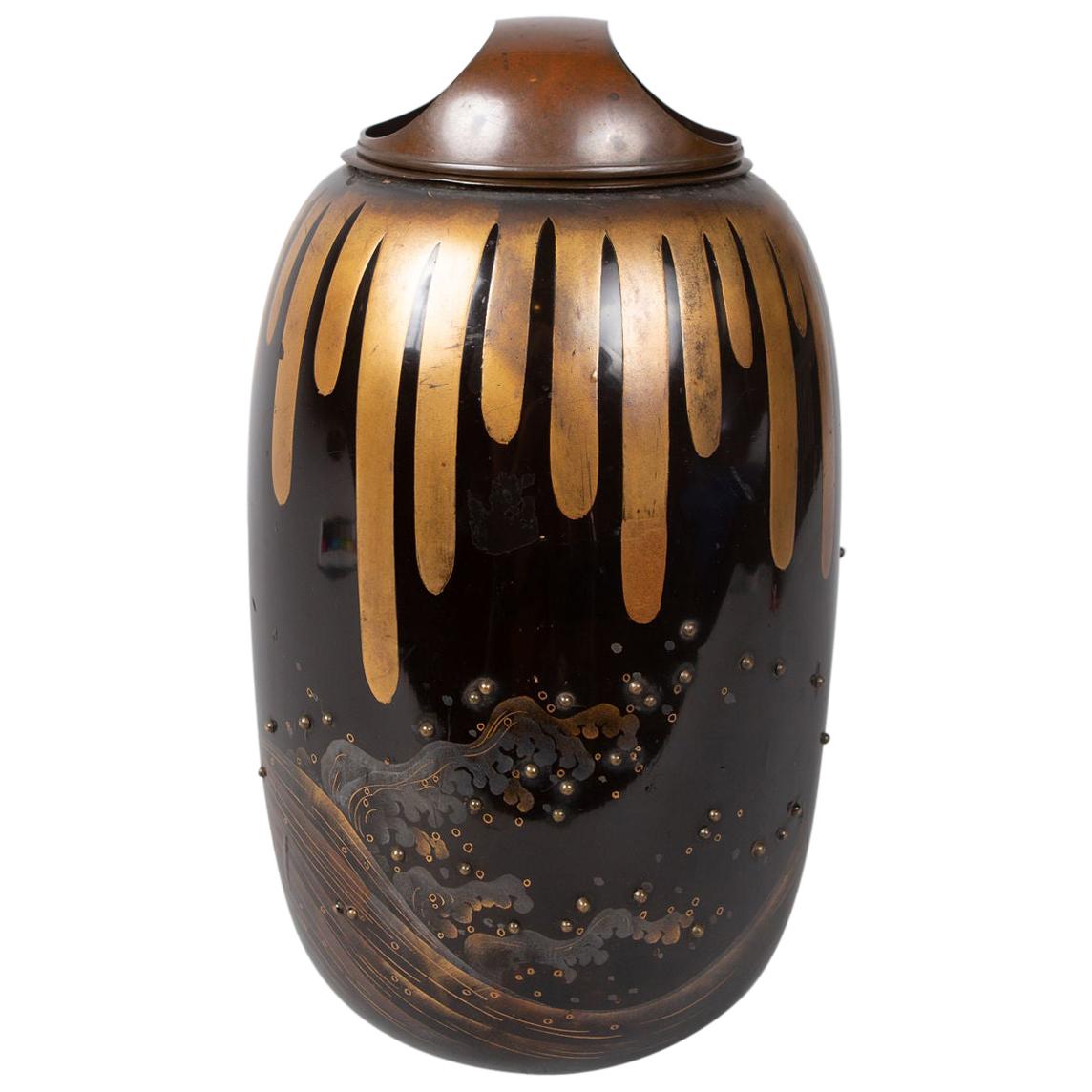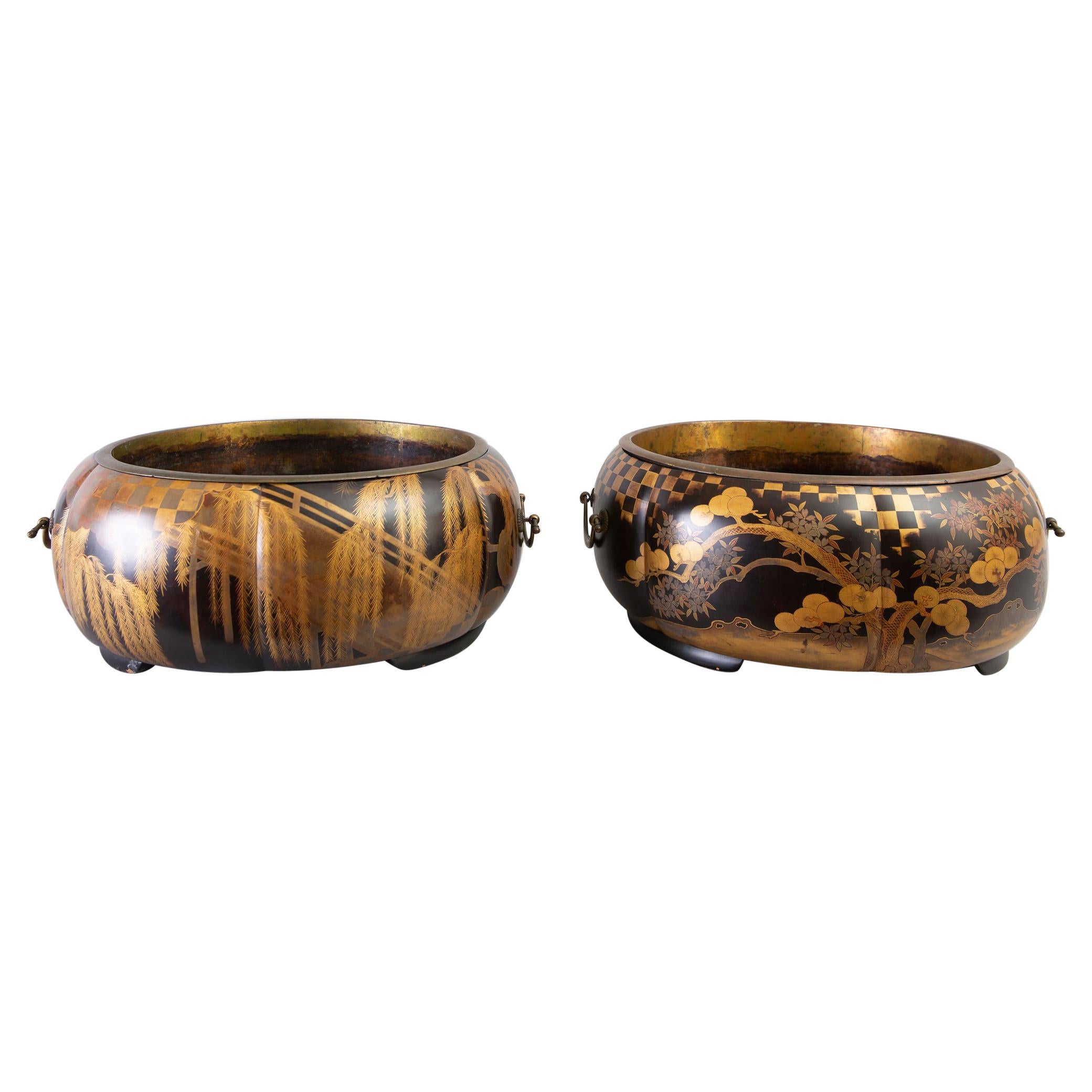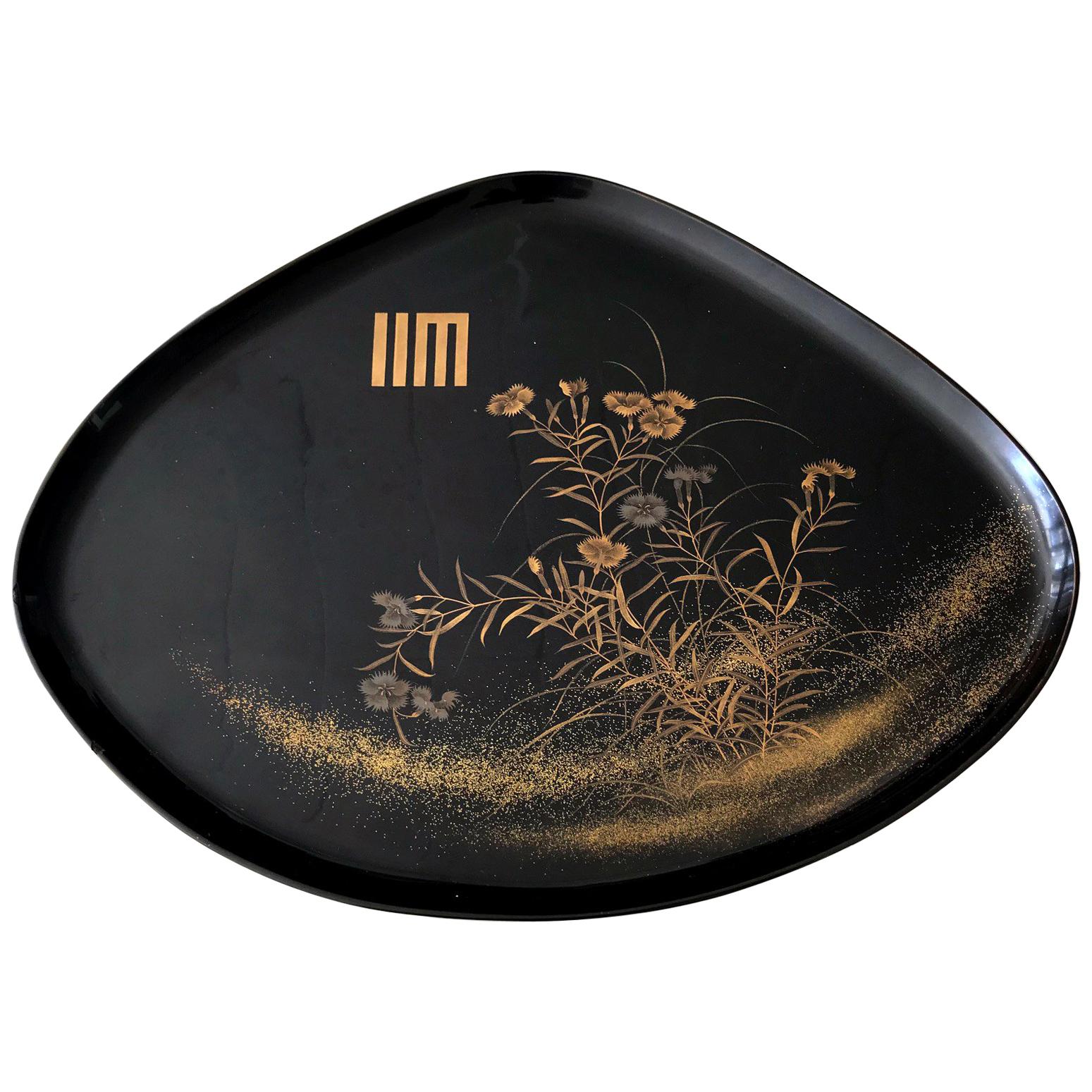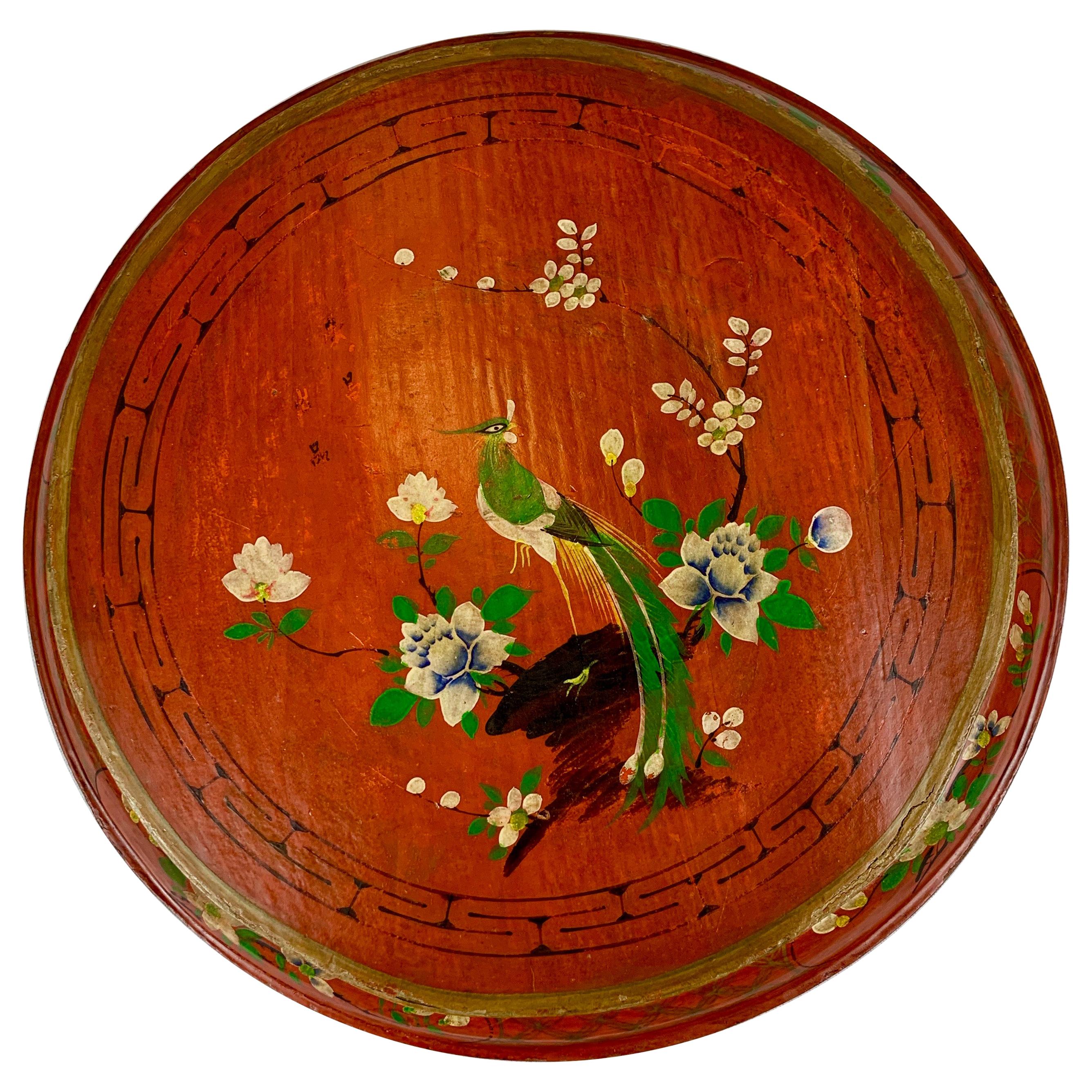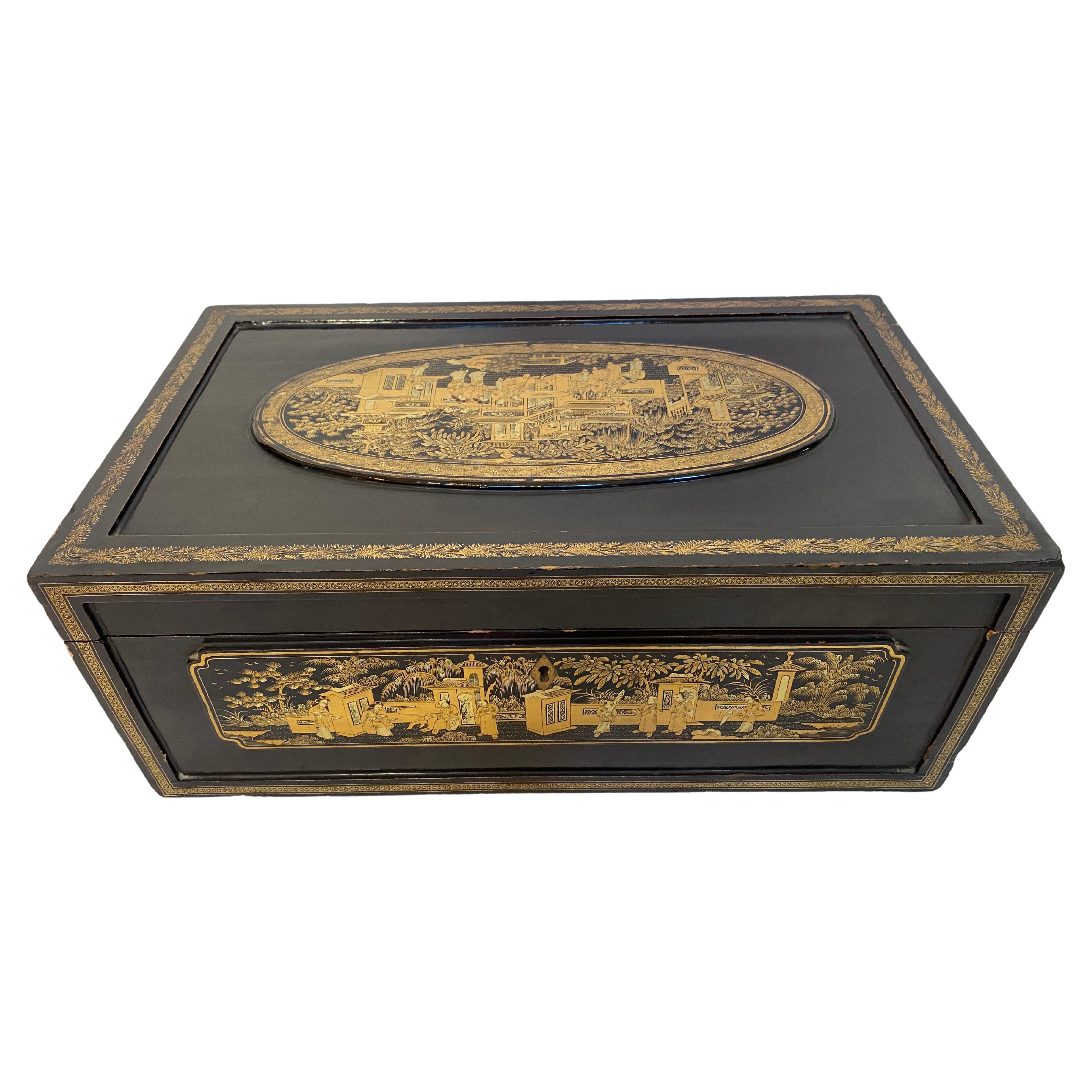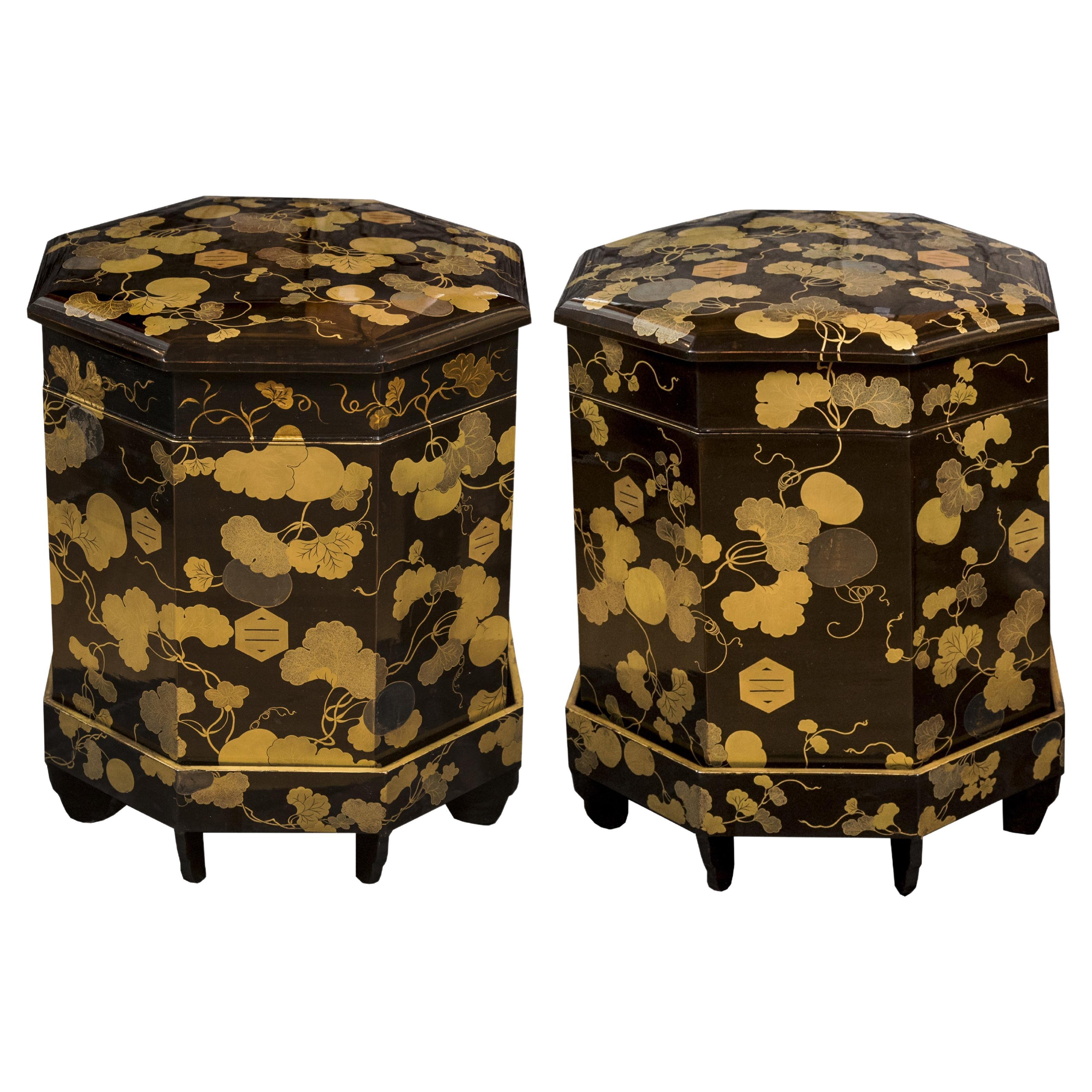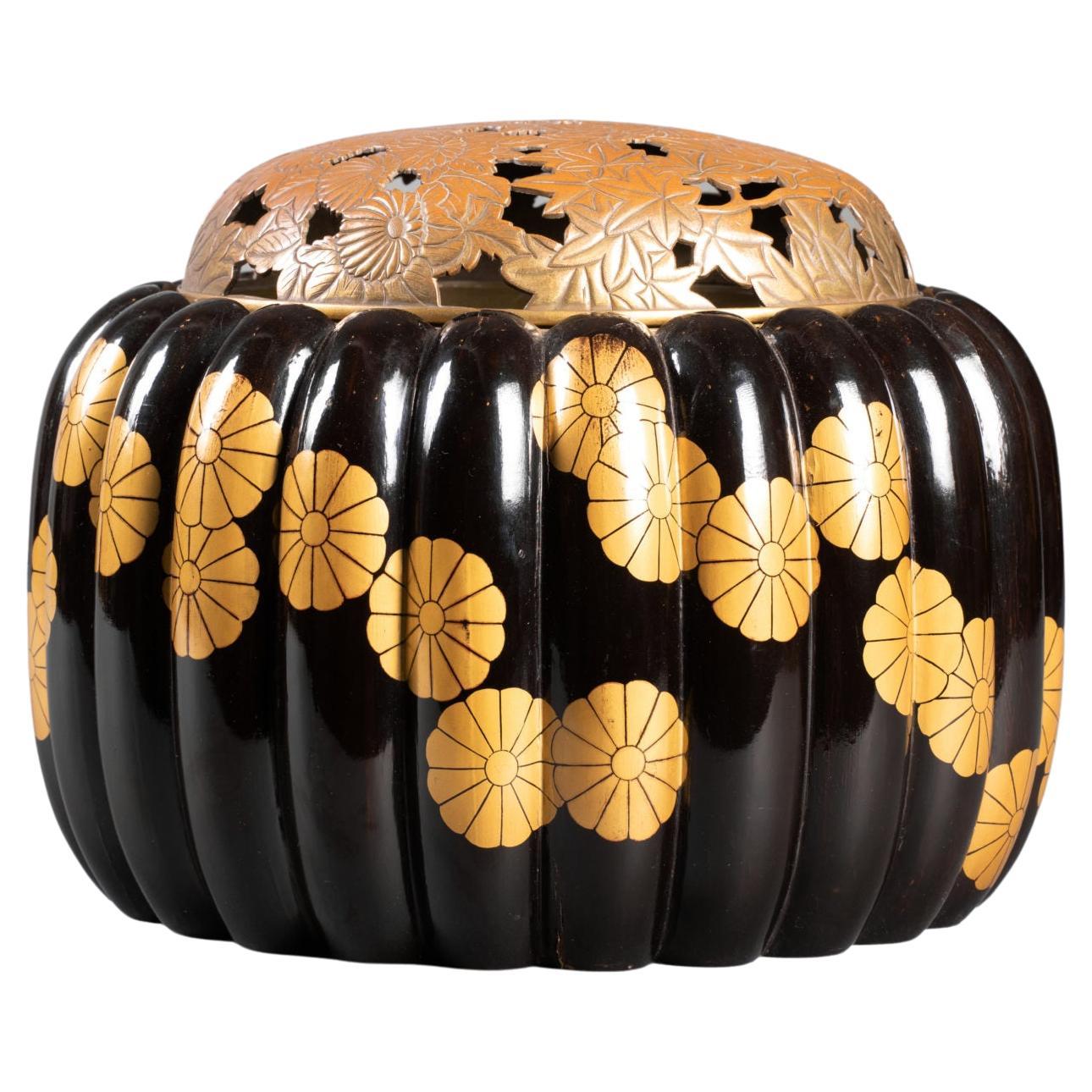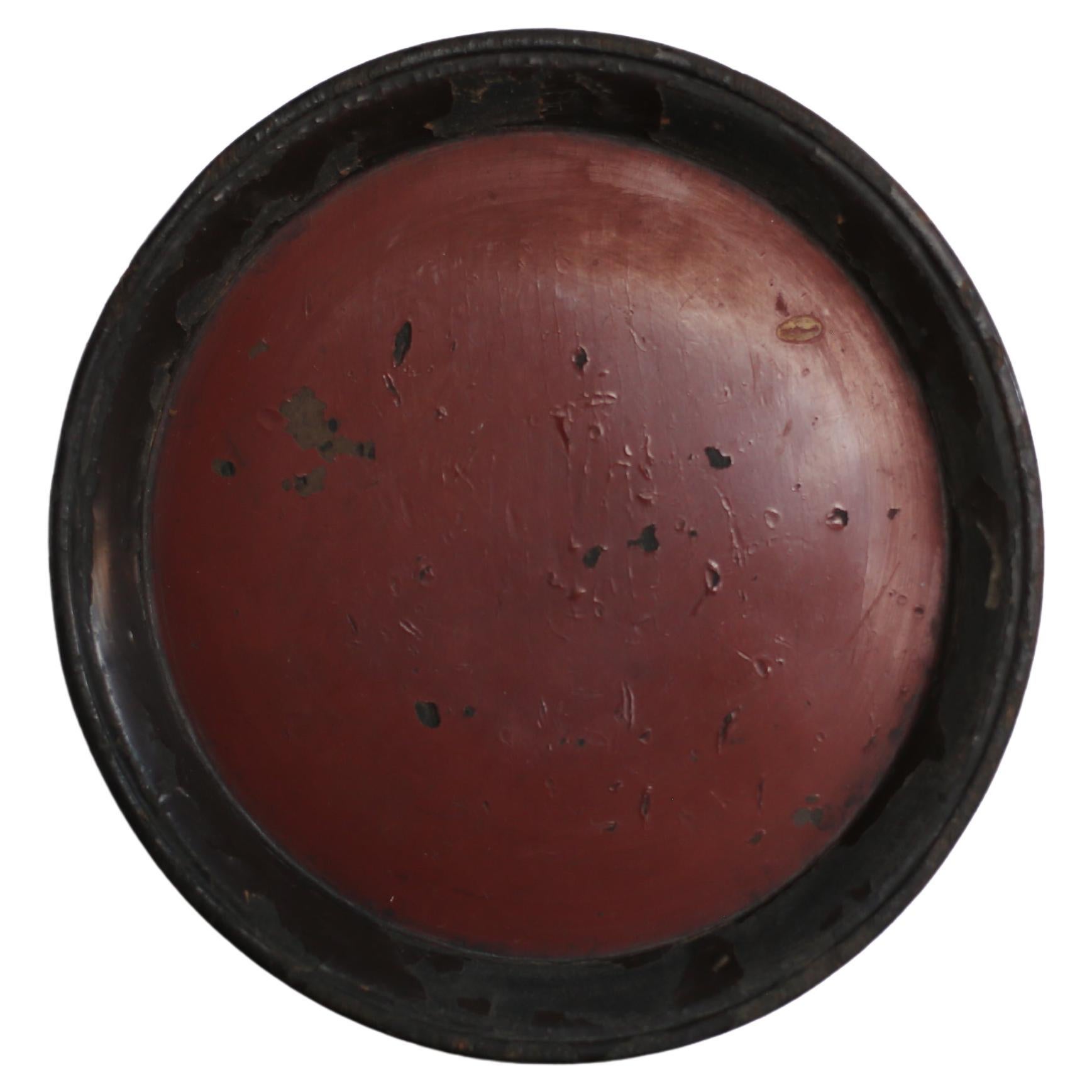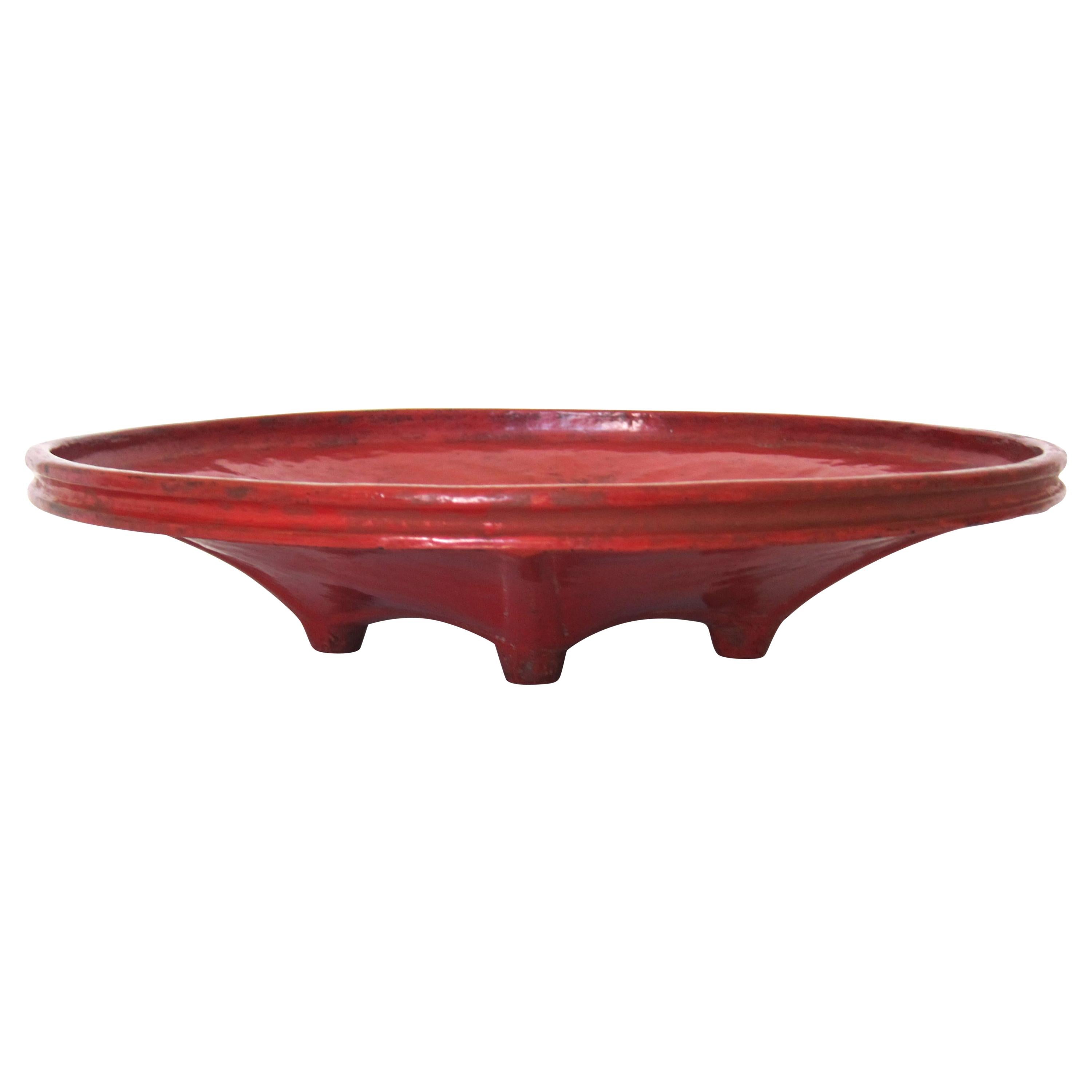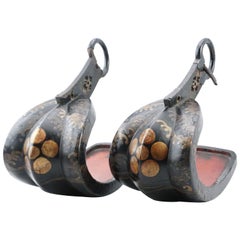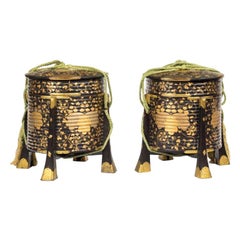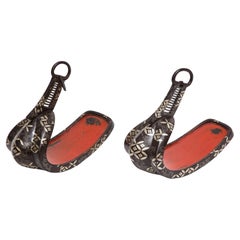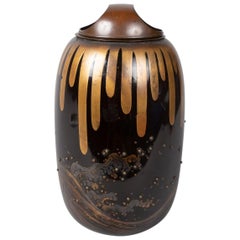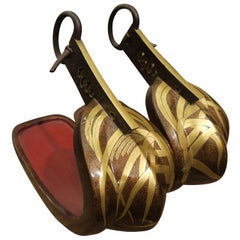
Pair of Lacquer Samurai Abumi 'Stirrups'
View Similar Items
1 of 5
Pair of Lacquer Samurai Abumi 'Stirrups'
About the Item
- Dimensions:Height: 9.75 in (24.77 cm)Width: 12 in (30.48 cm)Depth: 4.75 in (12.07 cm)
- Sold As:Set of 2
- Place of Origin:
- Period:
- Date of Manufacture:19th Century
- Condition:With minor chips and cracks.
- Seller Location:New York, NY
- Reference Number:Seller: A-3958/21stDibs: LU8495738324
Authenticity Guarantee
In the unlikely event there’s an issue with an item’s authenticity, contact us within 1 year for a full refund. DetailsMoney-Back Guarantee
If your item is not as described, is damaged in transit, or does not arrive, contact us within 7 days for a full refund. Details24-Hour Cancellation
You have a 24-hour grace period in which to reconsider your purchase, with no questions asked.Vetted Professional Sellers
Our world-class sellers must adhere to strict standards for service and quality, maintaining the integrity of our listings.Price-Match Guarantee
If you find that a seller listed the same item for a lower price elsewhere, we’ll match it.Trusted Global Delivery
Our best-in-class carrier network provides specialized shipping options worldwide, including custom delivery.You May Also Like
Japanese Samurai Abumi Stirrups Lacquer Edo, 18th Century
Located in Dallas, TX
Japanese Samurai Abumi Stirrups lacquer Edo late 18th century, early 19th century.
Measures: 12 inch length, 10 inch height, 5.5 inch width.
AVANTIQUES is dedicated to providing an...
Category
Antique Late 18th Century Japanese Edo Lacquer
Materials
Iron
Pair of Edo Period Black and Gold Lacquer Samurai Helmet Boxes
Located in Lymington, Hampshire
A pair of Edo period black and gold lacquer Samurai helmet boxes (Hakko Bako), each of ribbed cylindrical form with a lid, a black lacquer interior,...
Category
Antique 19th Century Japanese Edo Lacquer
Materials
Lacquer
Pair of Japanese Edo Period Iron Silver Inlaid Red Lacquered Stirrups 'Abumi'
Located in New York, NY
A Pair of Japanese Edo Period (1603–1867) iron, silver inlaid, and red lacquered stirrups (Abumi). Each of typical form, made of iron with silver inlay on the front with floral bloss...
Category
Antique 1690s Japanese Edo Metalwork
Materials
Silver, Iron
Japanese Lacquer Koro 'Incense Burner'
Located in Hudson, NY
Removable bronze top, with gold drip pattern at top. Cresting ocean waves on bottom with raised silver sea spray.
Category
Antique Early 19th Century Japanese Edo Lacquer
Materials
Silver, Bronze
Pair of Exceptional Daimyo Hand Warmers
Located in Hudson, NY
The daimyo were the ruling class of land owners, subordinate to shogun, who formed around the 10th century and fell out of power in the 19th century. Daimyo families tended to be wealthy and could commission artwork or decorative pieces. This pair of 17th century hibachi are black and gold lacquer with designs of Uji Bridge...
Category
Antique Late 17th Century Japanese Edo Lacquer
Materials
Lacquer
$65,000 / set
An Antique Japanese Lacquer Maki-e Tray
Located in Atlanta, GA
A fan shape black lacquer tray from Japan circa 1910-30s, late Meiji to early Showa era. Elaborated decorated with a bundle of yomogi blossom in a very fine Maki-e technique using both gold and silver powders. There is a Japanese symbol on the top left, which represents yomogiu, stemming from yomogi (蓬), a wild plant that belongs to the chrysanthemum family and widely grown in Japan.
This name yomogui is from a scene in the Tale of Genji...
Category
Early 20th Century Japanese Japonisme Lacquer
Materials
Lacquer
